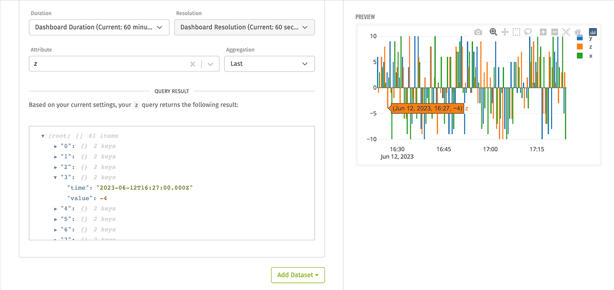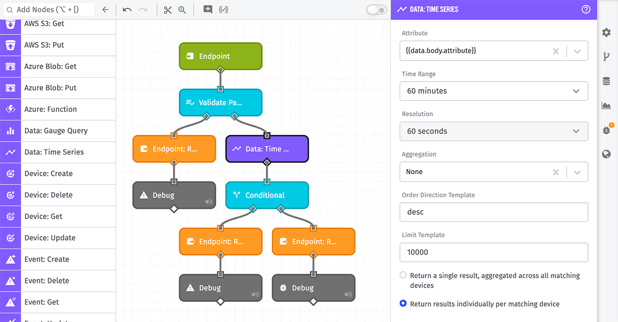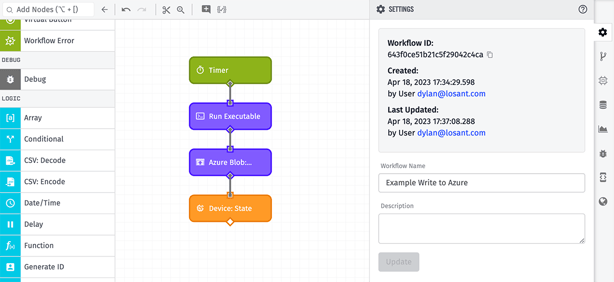Today’s platform update fulfills a number of requests that have come directly from our users. It includes several improvements to some frequently used features in Losant Dashboards and our Visual Workflow Engine.
Custom HTML Block Additions
First, many of our users have been utilizing our Custom HTML Block and Custom Chart Block (backed by the Vega visualization grammar) to build more advanced data visualizations within their dashboards. We’ve collected several feature requests and released a package of updates to enable even more custom interfaces through these blocks:

- We now display the data returned by each query defined in the blocks, which greatly eases the block development process by exposing the underlying data structure for use in custom charting libraries.
- We’ve expanded the range of available resolutions for a given duration in time series queries. We previously limited resolution options to return up to 1,000 data points; we now allow for selecting resolutions returning up to 25,000 data points.
- Data table queries now expose options for sorting, paginating, and limiting the results. This makes it possible to fetch additional rows beyond the first 1,000 returned and also allows for building a fully paginated custom table interface.
- Time series queries can now return unaggregated data for a single device, matching behavior we allow in the Time Series Graph Block.
- In the Custom HTML Block, we now expose a method for re-fetching data for all dashboard blocks. This enables a use case where a custom form built within the block can trigger some change in an application, and that change can then be reflected in the dashboard immediately after the request resolves.
We look forward to seeing what our users create with these new capabilities; common visualizations we see across many applications often help us prioritize the creation of new first-class dashboard blocks, as well as enhancements our existing suite of blocks.
Data Query Node Improvements
Today’s release also includes several improvements to the Time Series and Gauge Query workflow nodes. These updates bring the native nodes more in line with their API endpoint counterparts while also adding templating support to additional properties.

- Queries that match multiple devices can now return data points individually for each device matching the query, or the values across those devices can be aggregated into a single point (the current behavior).
- Aggregation config now accepts string templates, allowing for setting the aggregation method from a property on your workflow payload.
- The Time Series Node now supports returning the data points in reverse order (newest first), as well as limiting the number of returned points.
We have other changes to these nodes coming in the next few months, with an eye towards supporting everything that is capable through the Losant API in these more performant, more user-friendly first-class nodes.
Other Updates
As always, this release comes with a number of smaller feature improvements, including:

- We’ve begun rolling out a widget that details when a given application resource was created and by whom, and also when it was last updated and by whom. This will help developers working as part of larger organizations determine the source of unexpected updates in experience views, workflows, dashboards, and more.
- The OPC UA Trigger now allows for pulling its configuration from your Gateway Edge Agent’s config file. This enables a use case where connection information and monitoring instructions can be managed per device—and even updated on the fly using the Agent Config: Set Node. We intend to roll this out to other Edge Workflow triggers over the next several releases.
- Workflow debug logs now indicate if a message originated from an outdated “develop” version, which eliminates some confusion during the development process as changes are being rapidly applied.
What’s Next?
With every new release, we listen to your feedback. By combining your suggestions with our roadmap, we can continue to improve the platform while maintaining its ease of use. Let us know what you think in the Losant Forums.
